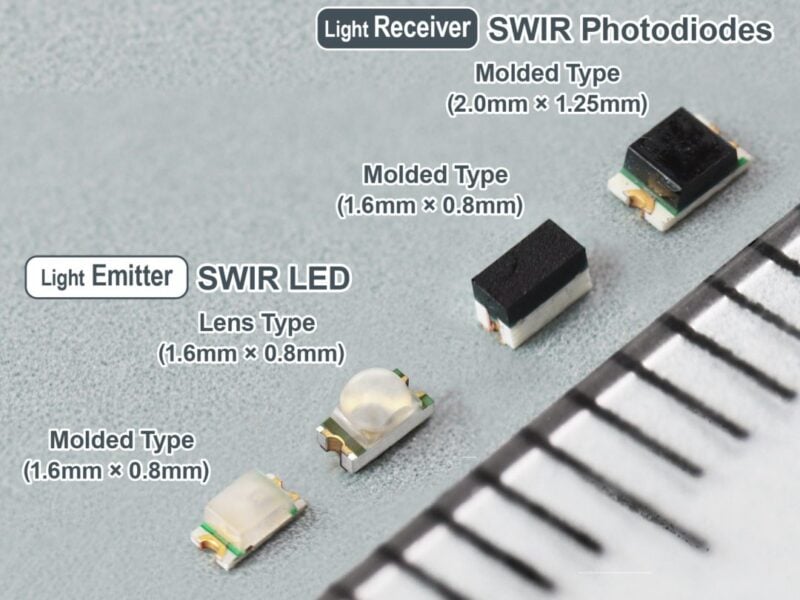
Smallest short wavelength IR devices for wearables
Rohm has developed Short-Wavelength Infrared (SWIR) LEDs and photodiodes in the industry’s smallest class 1608-size (1.6mm × 0.8mm) for wearable requiring material detection.
SWIR has a longer wavelength than near-infrared (NIR), providing greater permeability through different materials while being less susceptible to sunlight, smoke, and other particulate matter. As such, this technology is expected to expand the range of sensing substances such as water/gas and glucose.
Most SWIR devices have been through-hole package types for relatively large applications such as communication equipment and industrial analyzers. As a result there are very few surface mount products available on the market suitable for compact applications.
As SWIR is used to detect the presence of substances and their constituent components by taking advantage of characteristics of water, ice, gases, etc. that absorb specific wavelengths, target applications include light sources for blood oxygen saturation and blood glucose measurement devices in the medical field and measuring the water and sugar content of fruit and vegetables in the food industry.
Rohm also expects the devices to be used in sensing applications through OLED panels in portable devices and in wearables to add health monitoring and other novel functions.
Rohm has used its mass production of compound semiconductors such as visible and near-infrared LEDs. For the light emitting side, a lineup of ten LEDs is planned in varying package shapes (molded/lens) and wavelengths (1050nm to 1550nm). On the light receiving side, four photodiode models will be offered in different packages (1608-size / 20125-size (2.0mm × 1.25mm)) and photodetector block size.
SWIR LEDs will be offered in five wavelengths (1050nm, 1200nm, 1300nm, 1450nm, and 1550nm) to match the characteristics of different materials, and two types of surface mount packages – a general molded type and a lens variant featuring a narrower emission directivity along with higher radiation intensity.
This creates ten models in various combinations for a wide range of material detection, including the presence and constituent analysis of substances such as water, gases, and glucose.
SWIR photodiodes are characterized by a trade-off relationship in which the smaller the light detection area the faster the response speed, but a larger area provides greater sensitivity. For this reason, Rohm plans on offering four models in two light receiving diameter sizes and two package types. This will make it possible to select the ideal product based on application requirements, such the need for faster response or sensing in low light environments.
Samples of the SWIR light emitters and receivers shipped this month and the company is looking at new areas for sensing using the devices.
 If you enjoyed this article, you will like the following ones: don't miss them by subscribing to :
eeNews on Google News
If you enjoyed this article, you will like the following ones: don't miss them by subscribing to :
eeNews on Google News





